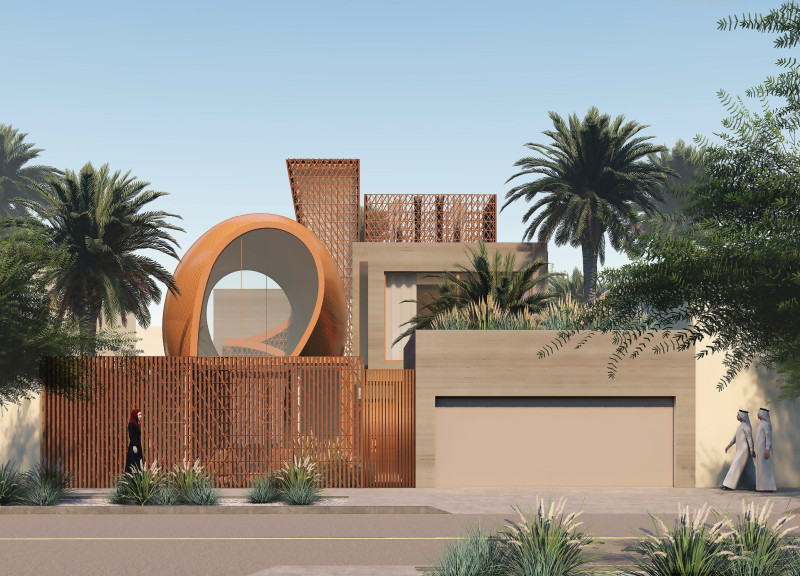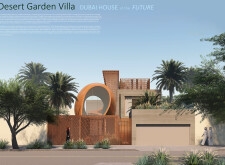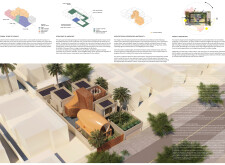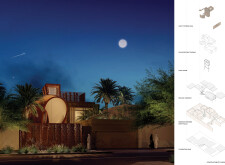5 key facts about this project
# Architectural Analysis Report: Desert Garden Villa – Dubai House of the Future
## Overview
Located in Dubai, the Desert Garden Villa exemplifies contemporary architectural design while incorporating traditional Arabic influences. The intent is to create a residential space that enhances privacy and promotes family interactions through a thoughtfully organized layout. Distinct zones for public and private activities facilitate movement within the home while respecting cultural values inherent in Middle Eastern architecture.
## Spatial Organization and User Experience
The villa’s spatial strategy highlights a careful delineation of service, public, and private areas, allowing for fluid transitions between different zones. This organization not only enhances functionality but also resonates with the cultural importance of family and privacy. The design encourages social interaction within communal areas, while private spaces are reserved for reflection and solitude, fostering a balanced living environment.
### Architectural Expression and Materiality
The villa's design integrates local materials and modern elements to address environmental challenges. The use of rammed earth walls provides natural insulation and enhances the structure's energy efficiency, while precast concrete contributes to durability and rapid construction. A robust steel frame allows for innovative architectural forms, and solar-efficient glazing minimizes heat gain while maximizing natural light. Unique features such as circular elements juxtaposed with angular forms create a visually dynamic façade that reflects the interplay between traditional and modern aesthetics. The inclusion of vertical gardens and lush landscaping further enhances the connection between indoor and outdoor spaces, promoting engagement with the natural environment.
By prioritizing these design principles, the Desert Garden Villa establishes a model for sustainable living that harmonizes architectural innovation with cultural context. Its strategic orientation within Dubai's climate ensures optimal sunlight and shade, facilitating thermal comfort and natural ventilation.





















































